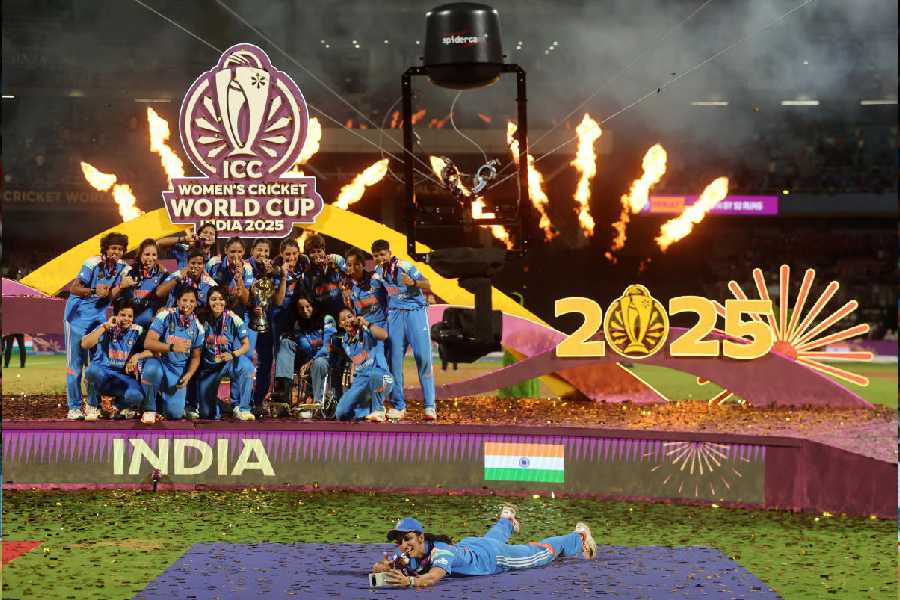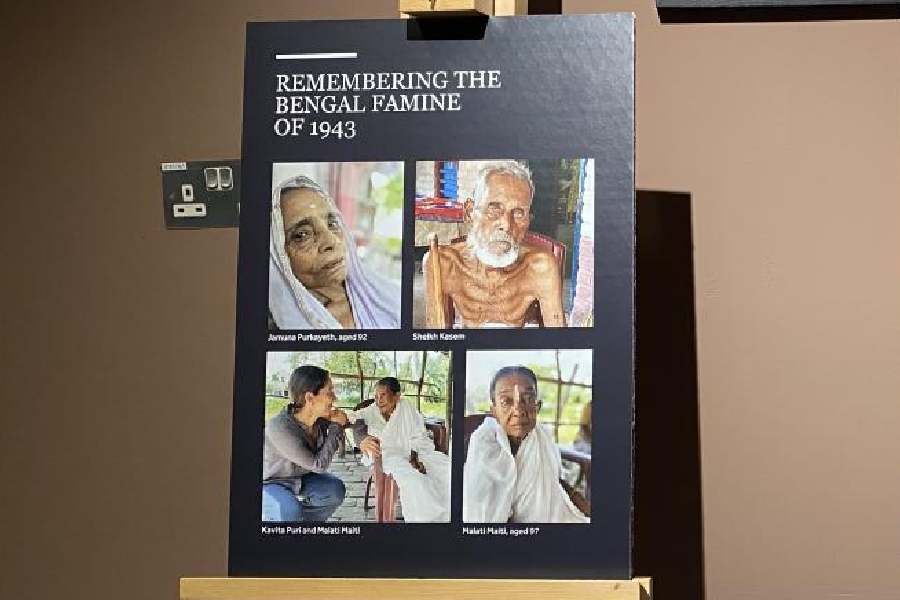 |
| A Patna Kalam painting at the museum in the state capital. Picture by Ranjeet Kumar Dey |
Former principal of College of Arts and Crafts, Patna, Shyam Sharma was pleasantly surprised on a visit to Berkley, California, when he was shown specimens of Patna Kalam, the school of painting that is nearly extinct in its homeland.
“Patna Kalam is a confluence of the Mughal miniature style and the influence of East India Company. This school developed from 1760 onwards and thrived between 1850 and 1900. But it declined in the 20th century and went out of fashion by 1940. The style was renowned internationally and connoisseurs of art still covet its specimens. The US citizen who showed me Patna Kalam paintings — that used to originate in Patna City — had bought it in Europe,” said Sharma.
In its early years, Patna Kalam was known as the Company School of Painting or the Company shaili.
Rita Sharma, assistant professor, painting department, College of Arts and Crafts, Patna, said: “One characteristic of this school is that the background of the paintings was kept stark. No detail was shown prominently. In this regard, it was different from other styles of miniature painting like the Rajasthani shaili, the Pahari shaili and the Mughal shaili. Another feature of this style of painting is that it depicts lives of common people like washermen, potters, ironsmiths, carpenters or itinerant musicians.”
Explaining the reason for the growth of this school, Arun Shrivastava, the head clerk of the college, said: “Before photography was invented, paintings were used to record day-to-day life in India. When officials of East India Company and the colonial government went back home, they would take these painting as gifts for their family and friends.
“Ivory, paper, fabric and mica were used as the medium for most of these paintings. Natural colours — produced from plants and foliage — were also used. These colours do not have any dark shades and look soft on the paintings. They also fade over time. Another feature of this school is that the subjects shown in these paintings have realistic proportions.”
The painters who developed and practised this art were originally from Murshidabad in Bengal. But they settled in the Patna City area as they got patronage from the royal families of Ara, Purnea, Bettiah, Deoghar, Tekari and Hathua.
Since the beginning of the 20th century, the demand for these paintings started to fall because of the popularity of photography. As the patronage for the painting declined, artists and their families started to migrate to other parts of the country in search of livelihood. Ishwari Prasad Verma, who died in 1949, and Damodar Prasad Ambastha, a member of the founding committee of College of Arts and Crafts, Patna, who died in 1994 were the last well-known painters of this school.
Now the Patna Kalam school is extinct for all purposes. Awareness about it is also on the decline. Shyam Sharma recalls a story of how a Patna Kalam painting went missing from an exhibition in 1968. When the organisers went to the police station to lodge a complaint, the officer-in-charge heard them out and said: “Why are you making such a fuss about losing a pen (In Hindi, kalam means pen)? Anyway, it would be very difficult to find it.”
Enthusiasts can now see paintings of this school only in museums or private collections. Some of these are on display at the Jalan Museum in Patna City, Chaitanya Pustakalaya at Gai Ghat, Khuda Bakhsh Oriental Public Library and Patna Museum.
There is, however, a slight glimmer of hope for Patna Kalam.
Though not included in the syllabus of College of Arts and Crafts, Patna, Rita Sharma makes her students copy some of the originals in the possession of the institution. “We will later try to produce some original Patna Kalam paintings later,” said the teacher, hoping to revive Patna’s very own school of art.










